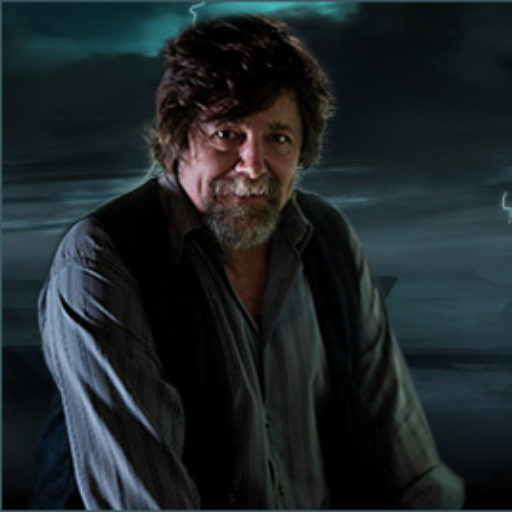Biography
I am best known for being the creator of the TRON franchise. I first turned wood when I was twelve, before I ever directed a movie or wrote a script, and have worked with wood throughout my life. For me it is the opposite end of the creative spectrum from movies and CGI, while filmmaking has gone fully digital, wood turning remains purely analog.
My turned pieces are in private collections in Santa Monica, Santa Barbara, and Pasadena. I studied film and drawing at the School of the Museum of Fine Arts, Boston and Tufts University.
About 75 years ago the people of Santa Monica and Los Angeles realized that due to our climate it was possible to grow very exotic trees from around the world, including varieties from the South Pacific and South America. Thanks to their passion, Carob, Norfolk Island Pine, African Fern Pine, Avocado, Camphor, and Black Acacia are just some of the trees that we have lining our streets and in our parks and backyards right beside indigenous trees like Oaks and Redwoods. Some of these rare trees have now reached the end of their life span and have become a source of very desirable timber. I can’t think of another location in the world that has a more diffuse and interesting variety of rare and tropical trees. Much of the wood I turn is not commercially available anywhere and being able to work with it is an exciting challenge.
Each of my pieces is unique, made entirely by me from the initial rough chain sawing through the shaping and final finishing. If possible I often try to make my vessels in sets, creating several from a single trunk.
Living in Santa Monica I have learned to make the walls of my vessels just thick enough so that in the event of a earthquake, if they fall from a table or shelf, they survive intact. They are designed to last.
Philosophy
If one imagines that each spin of the lathe is a day, we are all being turned on the lathe of God. Our past is turned away day by day, but the memories remain within us, like a hollowed vessel “holds” all the years of the tree’s past.
The outside of the vessel is the only ring of wood we can see, like the present it’s the only part we can shape. Where the chisel cuts the spinning wood is the now. If I don’t stay in the now things can go wrong real quick on and off the lathe.
Flaws in the wood can create character, they can add beauty and uniqueness. But if the flaws are too severe the vessel can crack and may even split apart under stress. If our weaknesses and wounds don’t overwhelm us they can become strengths; they can be the source of character or they can destroy us – we sometimes crack up, too. Anything spinning on a lathe has to be centered, that’s where the expression “finding one’s center” comes from, the difficult part is finding a center that will hold, especially when the balance is off and everything is wobbling all over the place.
I have worked with Redwood that was a thousand years old but most trees I turn are between 50 and 100 years old, they live about as long as we do. As I turn away the years I think of the all the seasons the tree lived through. I can see and feel how the rain and the wind altered its growth. Sometimes I know where the tree was growing and how it died. Local tree crews call me to see if I want the trees they cut down. The crews are always glad when I take some, they know much of this timber is just too beautiful to take to the dump or use as firewood, but that’s where most of it goes – up in smoke. I have cut down large dead trees myself, learning to turn large vessels also meant learning how to use a large chainsaw, not to mention rakes, shovels, and wheelbarrows. Each vessel represents roughly a half dozen wheelbarrows full of chips and sawdust that goes to the recycler and on to the landfill, from sawdust to sawdust.
When the wood is fresh my vessels are rough turned with thick walls and then allowed to dry in a controlled storage so they don’t crack, for a year or two, it’s a bit like making wine, before being put back on the lathe and returned with thinner walls and bases. About half the weight of fresh wood is water and spinning the wood at high speed I often get soaked. Unfortunately, not every piece makes it, Nature has her own ideas. I have tried to get her to compromise, pleaded with her in fact, but she doesn’t respond to talk, it’s all very humbling. She’s more stubborn than the hardest wood, she wins every argument and it always comes down to one thing with her, having the right touch. The vase shape is a very feminine form, with a “waist and hips”, I hope she notices and appreciates my efforts. All sanding and modern finishing is designed to mimic what happens to wood if it is handled a lot, in the old days the natural oils from our hands gave wooden objects the best finish possible.
I like to think the vessels will be appreciated for a long time, handed down through the generations often enough to improve the finish.
Steven Lisberger
 Steven Lisberger
Steven Lisberger